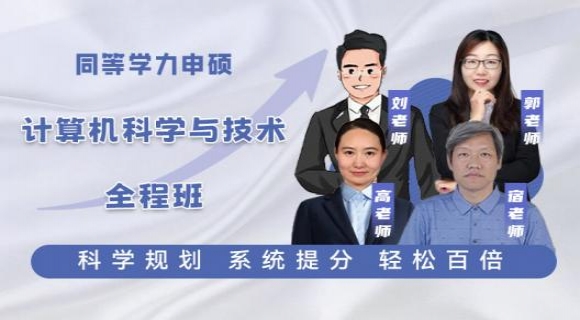
单选题
American farmers have been complaining of labor shortages for several years now. Given a multi-year decline in illegal immigration, and a similarly sustained pickup in the U.S. job market, the complaints are unlikely to stop without an overhaul of immigration rules for farm workers.
Efforts to create a more straightforward agricultural-workers visa that would enable foreign workers to stay longer in the U.S. and change jobs within the industry have so far failed in Congress. If this doesn’t change, American businesses, communities and consumers will be the losers.
Perhaps half of U.S. farm laborers are undocumented immigrants. As fewer such workers enter the U.S., the characteristics of the agricultural workforce are changing. Today’s farm laborers, while still predominantly born in Mexico, are more likely to be settled, rather than migrating, and more likely to be married than single. They are also aging. At the start of this century, about one-third of crop workers were over the age of 35. Now, more than half are. And crop picking is hard on older bodies. One oft-debated cure for this labor shortage remains as implausible as it has been all along: Native U.S. workers won’t be returning to the farm.
Mechanization is not the answer either — not yet at least. Production of corn, cotton, rice, soybeans and wheat have been largely mechanized, but many high-value, labor-intensive crops, such as strawberries, need labor. Even dairy farms, where robots currently do only a small share of milking, have a long way to go before they are automated.
As a result, farms have grown increasingly reliant on temporary guest workers using the H-2A visa to fill the gaps in the agricultural workforce. Starting around 2012, requests for the visas rose sharply; from 2011 to 2016 the number of visas issued more than doubled.
The H-2A visa has no numerical cap, unlike the H-2B visa for nonagricultural work, which is limited to 66,000 annually. Even so, employers frequently complain that they aren’t allotted all the workers they need. The process is cumbersome, expensive and unreliable. One survey found that bureaucratic delays led H-2A workers to arrive on the job an average of 22 days late. And the shortage is compounded by federal immigration raids, which remove some workers and drive others underground.
In a 2012 survey ,71 percent of tree-fruit growers and nearly 80 percent of raisin and berry growers said they were short of labor. Some western growers have responded by moving operations to Mexico. From 1998-2000, 14.5 percent of the fruit Americans consumed was imported. Little more than a decade later, the share of imported fruit had increased to 25.8 percent.
In effect, the U.S. can import food or it can import the workers who pick it.
1.What problem should be addressed according to the first two paragraphs?
A.Discrimination against foreign workers in the U.S.
B.Biased laws in favor of some American businesses.
C.Flaws in U.S. immigration rules for farm workers.
D. Decline of job opportunities in U.S. agriculture.
2. One trouble with U.S. agricultural workforce is_______.
A.the rising number of illegal immigrants
B.the high mobility of crop workers
C.the lack of experienced laborers
D.the aging of immigrant farm workers
3. What is the much-argued solution to the labor shortage in U.S. farming?
A. To attract younger laborers to farm work.
B. To get native U.S. workers back to farming.
C. To use more robots to grow high-value crops.
D. To strengthen financial support for farmers.
4. Agricultural employers complain about the H-2A visa for its ___.
A. slow granting procedures
B. limit on duration of stay
C. tightened requirements
D. control of annual admissions
5.Which of the following could be the best title for this text?
A. U.S. Agriculture in Decline?
B. Import Food or Labor?
C. America Saved by Mexico?
D. Manpower vs. Automation?

1、【答案】 [C] Flaws in U.S. immigration rules for farm workers
【解析】根据题干提示词first two paragraphs可知本题依据文章前两段命制,为双段推理型题目。快速扫读可知前两段大意为:美国针对外来农民所定移民规则中存在一些问题,并指出如不及时解决美国商业,社会以及消费者都会受到影响。比对选项可直接判断正确选项为C项,其余选项均属无中生有,直接排除。
2、【答案】[D] the aging of immigrant farm workers
【解析】细节推理题。根据题干中的trouble, U.S. agricultural workforce以及段落序列定位到文中第三段第二句。定位段第三至七句都在论证第二句的内容,其中第三句论证的是劳动力的来源及其倾向,第四至七句论证的是劳动力在变老并指出picking crops is hard on older bodies. 与选项D吻合。选项A中的rising及illegal属于无中生有,选项B中的high mobility与定位段中的farm labors are more likely to be settled rather than immigrating矛盾,选项C属无中生有。
3、【答案】 [B] To get native U.S. workers back to farming.
【解析】细节题。根据题干中的much-argued solution to the labor shortage定位到第三段最后一句,其中oft-debated对应原文的much-argued,solution对应原文的cure,剩余信息出答案,冒号解释了这个经常被谈论的方法:美国本国工人不会重返农场。说明本身的解决方法是让美国本国工人回到农场,与选项[B]一致。[A]选项attract younger laborers在文章未体现,文章只是提到现在的farm laborer在老龄化。[C]选项出现在文章的第四段,文章只是说在high-value crops上需要劳动力。在乳牛场机器人只做了一小部分工作。选项将两部分杂糅在一起了。[D]选项中financial support在文中未提及,属于无中生有。
4、【答案】 [A] slow granting procedures
【解析】 因果细节题。根据题干中的具体信息,agricultural employers,complain,about the H-2A visa。回文定位到第六段。根据具体信息定位到第六段的,Employers complain they aren’t given all the workers they need.这句话是抱怨的内容,文中问的是原因,紧接着下面一句话,the process is cumbersome,expensive,and unreliable.并且在这句话后面one survey 是例子。根据例子证明论点,下面的例子和前面的the process这句话表达的观点是一致的。同时,在例子中有for的同义词lead to,导致了arrive on the job 22 days late. Delay,late 对应选项中的slow,procedure对应process。所以选A。B中的limit,原文后面跟着是人数66,000,偷换概念。C中的request出现在例子中,说的是visa rose sharply。D项文中未提及,无中生有。
5、【答案】B Import Food or Labor?
【解析】主旨题。文章第一段明确指出美国农民面临劳动力短缺的问题,而这一问题的根源在于针对农场工人的移民制度。二段和三段分析了移民签证和移民现状的冲突。第四段指出机械化并不能解决该问题。第五和六段分析了现在农场工人所依赖的H-2A签证政策也没能有助于解决劳动力短缺。第七段通过研究调查再次确定了劳动力短缺的问题。最后一段总结指出解决方案,美国要么进口食品,要么进口农场劳动力。Labor为本文中复现的主题词。故正确答案为B选项。A选项中的decline夸大概念。C选项中的saved无中生有,D选项中的Automation断章取义,且与原文表述相反。











